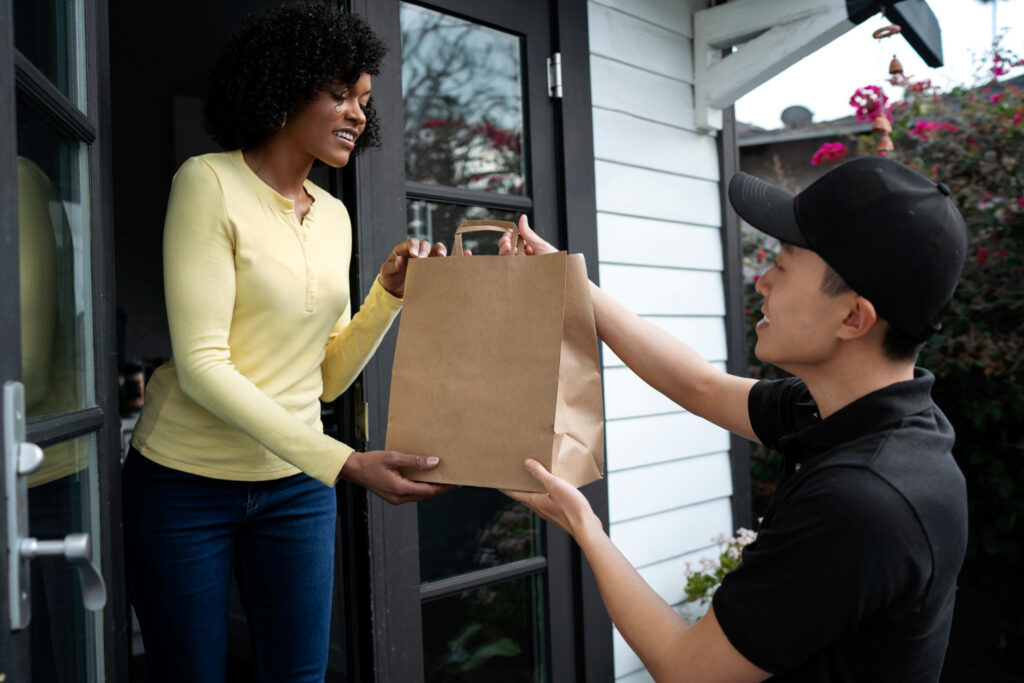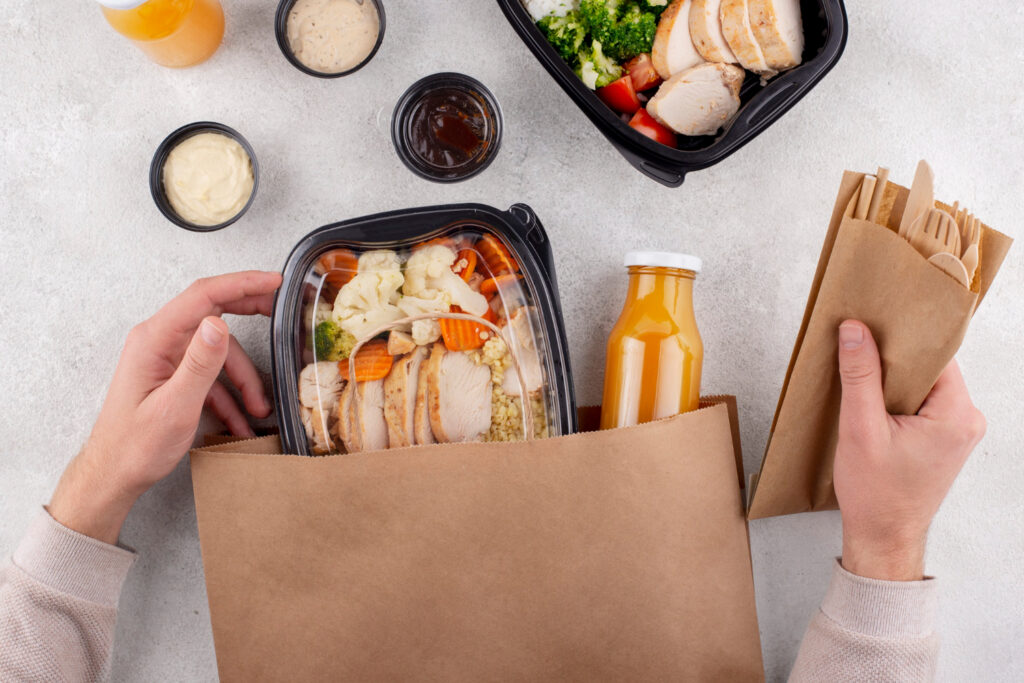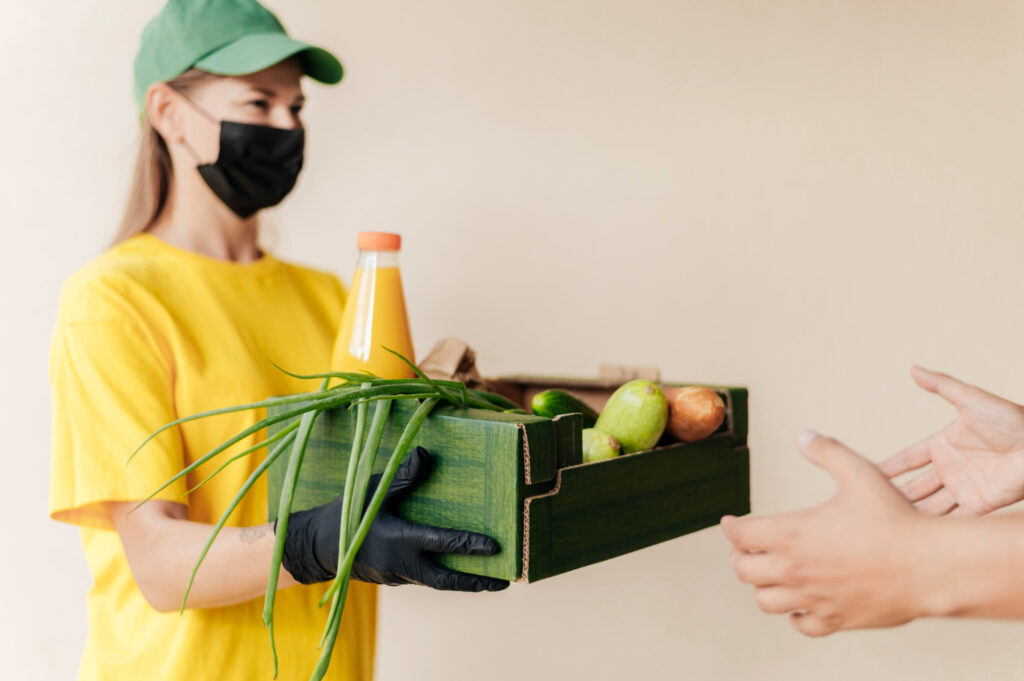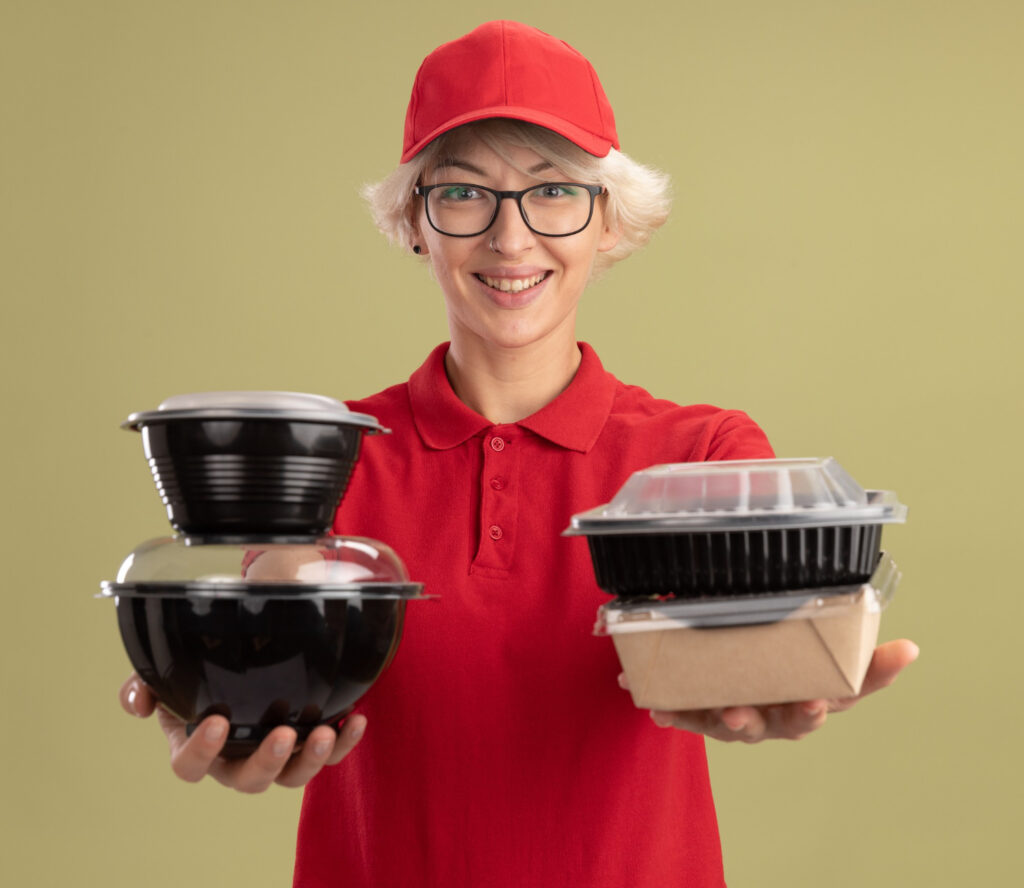In today’s world, it seems like everyone is busy. And for time-crunched people, cooking a meal from scratch can be overwhelming. That’s where food delivery comes in.
A food delivery business can be a great option for anyone looking to start their own business. But before you start, there are a few things you need to know. This blog post will give you a rundown on how to start a food delivery business and what you need to do to get started.
Plus, we’ve included a handy checklist to ensure you have everything covered. So read on and learn all you need to know about starting your own food delivery business!
Is A Food Delivery Business Profitable?
The short answer is yes, but there are some caveats. Let’s take a closer look at the potential profitability of a food delivery business. A food delivery business has two main revenue streams: delivery fees and commissions on orders.
Delivery fees are typically a flat rate charged per order, while commissions are a percentage of the total order value. The revenue generated from each of these streams will vary depending on the type of food delivery business you’re running.
For example, businesses that focus on delivering restaurant meals will generate most of their revenue from commissions. In contrast, those that deliver groceries or prepared meals will make more from delivery fees.

Which Food Delivery Service Is Best For You?
Before discussing how to start a food delivery business, let’s check which type of food delivery service suits you.
Delivery For Restaurants
Delivery for restaurants is a great option for entrepreneurs who want to enter the lucrative market of food delivery services. By partnering with local restaurants, you can provide a wider range of food options to customers without the high overhead costs of opening a restaurant.
The key to success in this market is to establish a strong network of restaurant partners and offer competitive pricing and exceptional customer service. With the increasing popularity of food delivery apps, it’s easier than ever to start a delivery service without needing to build your own platform.
However, the competition in the food delivery market is fierce, so it’s important to conduct thorough market research and offer unique value propositions to stand out.
Pet Food Delivery
Entrepreneurs who are passionate about pets can find a unique and profitable market in pet food delivery services. With the demand for pet food and supplies on the rise, there is a great opportunity to provide a convenient and hassle-free way for pet owners to purchase their furry friends’ necessities.
Partnering with local pet food and supply companies can allow you to provide delivery services directly to their customers.
As pet owners are often devoted to their furry friends, offering personalized services and a genuine passion for animals can help to establish a loyal customer base and ensure long-term success.
Grocery Delivery
As consumers lead increasingly busy lives, the popularity of grocery delivery services has soared.
By partnering with local grocery stores, entrepreneurs can provide a convenient and efficient way for customers to purchase their groceries without leaving their homes. This service is particularly attractive to elderly or disabled individuals who may have difficulty leaving their homes.
Offering a diverse range of products and flexible delivery options, such as same-day or next-day delivery, can help to attract a larger customer base. Additionally, providing a subscription service for regular customers can help to build loyalty and ensure repeat business.
Fruit Delivery
There are many reasons to start a fruit delivery service. For one, it is a great way to get fresh fruit into the hands of people who may not have easy access.
This can be especially important for those living in rural areas or with limited transportation options. Another reason to start a fruit delivery service is that it can be profitable.
If you can source your fruit at a low cost and then sell it at a markup, you can make a good profit. There are many ways to market and sell your fruit, so you should be able to find a way that works well for you.
Meal Kit Courier
Meal kit courier services provide a convenient and healthy solution for busy consumers who wish to prepare home-cooked meals without the hassle of grocery shopping.
To succeed in this competitive market, it’s crucial to offer high-quality products, competitive pricing, and exceptional customer service.
Building strong relationships with meal kit companies and prioritizing efficient delivery logistics are also essential to ensure the timely delivery of fresh ingredients.
Offering a user-friendly online platform with a variety of meal options and flexible delivery options, such as different delivery windows, can help to attract a larger customer base.

Choosing The Right Business Model
When starting a food delivery business, choosing the right business model is crucial to ensure success. There are several business models to consider, including on-demand, full-service, and partial service.
On-Demand
On-demand delivery services allow customers to place orders and have them delivered quickly, usually within an hour or less. This model is ideal for customers who require urgent or last-minute deliveries.
On-demand delivery services typically use mobile apps or websites to facilitate ordering and offer real-time tracking of deliveries.
While this model provides fast and convenient service to customers, it can be challenging for businesses to manage the high volume of orders and meet the demand for quick delivery.
Full-Service
Full-service delivery services offer end-to-end delivery, including picking up orders from restaurants or suppliers, managing inventory, and delivering to customers.
This model requires a significant investment in logistics, as businesses need to manage their own fleets of drivers and ensure timely deliveries.
However, full-service delivery services can provide a more personalized and reliable service to customers.
Partial Service
Partial service delivery services are a hybrid of on-demand and full-service models. They allow customers to order from a limited selection of restaurants or suppliers and offer a more personalized service than on-demand models.
Partial service delivery services may work with a select group of drivers or outsource deliveries to third-party logistics providers.
This model can be a cost-effective option for businesses that want to offer delivery services without managing their own logistics.

Starting A Food Delivery Business Checklist
Here’s a checklist food delivery businesses should tick off:
Decide On Your Niche
Starting a food delivery business can be a great way to earn extra income or even turn it into a full-time business. But before you get started, it’s important to decide on your niche.
This will help you determine what type of food delivery business you want to start and what kind of customers you want to target.
Develop A Business Plan
Food delivery businesses in a few different ways. You can work with restaurants to deliver their food, start your restaurant that delivers food, or create a meal delivery service that delivers prepared meals.
Once you’ve decided on your business model, it’s time to start developing a business plan. This will help you figure out the details of your business, including your marketing strategy, financial plan, and operations plan.
Choose Names And Branding Strategy
This may seem like a small detail, but it’s very important. Your business name will be the first thing potential customers see, so it should be catchy and memorable. It should also be relevant to your business – for example, if you’re specializing in healthy food delivery, you might want to include the word “healthy” in your name.
Once you’ve chosen a name, it’s time to start thinking about branding. Branding is all about creating an identity for your business – what makes you different from your competitors? What kind of image do you want to project?
Your branding strategy should be carefully considered and well-executed to make a lasting impression on customers.
Calculate The Cost Of The Initial Investment
The first step in estimating the cost of starting a delivery business is to assess your business model and delivery area. Are you planning on delivering meals to customers’ homes or businesses? What type of foods do you plan on delivering? The next step is to determine your start-up costs.
This includes the cost of renting or leasing a delivery vehicle, purchasing supplies and equipment, and obtaining insurance. Another important factor in the cost of starting a food delivery business is marketing expenses.
You’ll need to budget for advertising and promotion and any fees associated with online ordering platforms or third-party delivery services. Finally, don’t forget to factor in the ongoing costs of running a food delivery business, such as fuel, vehicle maintenance, and employee salaries.
Get The Right Licenses And Permits
The first step in starting your food delivery business is to obtain the necessary licenses and permits. You may need a state or local government license depending on your location. Additionally, you will need to obtain a permit to operate your business from the health department.
Next, you will need to purchase insurance for your business. This will protect you if something goes wrong with your food delivery business. You will also need to obtain a business license from your city or county.
Once you have all of the necessary licenses and permits, you will need to find a location for your business. You will want to choose a location that is convenient for your customers. Additionally, you will want to make sure that your location is in a safe area.
Setup The Needed Equipment And Team
The first thing you need to do is gather the necessary equipment. This includes a commercial kitchen, refrigeration, and food storage facilities. You will also need a delivery vehicle large enough to accommodate your orders.
Next, you need to assemble a team of employees who can handle the daily operations of your business. This team should include a chef, server, delivery driver, and customer service representative.
Once you have all the necessary equipment and team in place, you need to develop a marketing strategy. This will help you attract customers and grow your business. Finally, you need to set up an online ordering system. This will allow customers to place orders online and track their delivery status.
Once these elements are in place, you are ready to start your food delivery business! Keep track of your progress and make adjustments as needed to ensure success.
Set Up Suitable Channels For Receiving Orders
You can use a few key channels to receive orders when starting your food delivery business. The most obvious is the phone, but you can also use online ordering systems, email, or even text messaging.
The important thing is to make sure that you have a system in place that is reliable and easy for your customers to use.
You don’t want to miss out on orders because your system is too complicated or unreliable. One of the best ways to ensure that you’re able to receive orders is to use an online ordering system. A few options are available, but the most popular is probably GrubHub.
Set Up the Delivery System
When starting a food delivery business, one of the most important things you’ll need to do is set up a delivery system.
This can be as simple as choosing a dispatch software, hiring a few drivers and having them use their vehicles, or it can be a more complex operation with multiple vehicles and delivery routes.
No matter what size delivery system you have, you need to make sure your drivers are insured. This is important not only for their safety but also for protecting your business in case of an accident.
You also need to develop a good system for tracking orders and keeping track of where your drivers are at all times. This will help you ensure that orders are delivered on time and that your drivers are safe.
Optimize Delivery Routes
Assuming your food business is up and running, optimizing your delivery routes is next. This will help you get your food to your customers promptly and efficiently.
The first thing you need to do is map out all of your potential delivery routes. This will give you a good idea of where your customers are and how best to reach them.
Once you have your routes mapped out, you need to determine the best time of day to deliver to each route. This will ensure that your food is delivered fresh and on time.
Once your routes and delivery times are determined, you must ensure you have the right vehicle for each route.
Market Your Business
Starting a food delivery business is important to market your business well. You must tell people about your business and what you can offer them. There are many ways to market your business, and you should choose the ones that best fit your business. Make a website for your business.
This is a great way to inform people about your business and your offer. You can include photos of your food, a menu, and contact information.
Create social media accounts for your business. This will allow you to interact with potential customers and tell them about your business. Make sure to post regularly and respond to comments and messages.

Starting a food delivery business FAQ
What kind of food should I offer for my food delivery business?
The type of food you offer will depend on your target market and your area. Consider the demographics of your area and the demand for certain types of cuisine. You may also want to consider offering a variety of options to appeal to a wide range of customers. Additionally, consider partnering with local restaurants or suppliers to offer a diverse range of options.
How do I know if there is a demand for my food delivery business in my area?
You can conduct market research to determine if there is a demand for your food delivery business in your area. This can include analyzing demographics, conducting surveys, and researching competitors. Additionally, you can test the demand by offering a limited service or conducting a soft launch to gauge interest.
What legal requirements do I need to fulfill to start a food delivery business?
Legal requirements will vary depending on your location and the type of business structure you choose. You may need to obtain a business license, register your business with local authorities, obtain insurance, and comply with health and safety regulations.
It’s important to research the legal requirements in your area and consult with a lawyer or accountant to ensure you comply with all necessary regulations.
How can I create a unique brand for my food delivery business?
Creating a unique brand can help differentiate your business from competitors and attract customers. Consider developing a strong brand identity that reflects your business’s values and personality.
This can include creating a memorable logo, developing a unique tone of voice for your marketing materials, and using social media to build an engaged community of followers. Additionally, consider offering unique services or menu items that set your business apart from competitors.
What technology do I need to manage my food delivery business?
Technology plays a crucial role in managing a food delivery business. You will need a reliable and user-friendly online ordering platform, a dispatching system for managing deliveries, and a payment processing system.
Additionally, you may want to invest in a customer relationship management (CRM) system to track customer interactions and data analytics tools to measure your business’s performance.
How can I ensure that my food stays fresh during delivery?
Ensuring the freshness of your food during delivery is critical to maintaining customer satisfaction. You can invest in insulated bags or containers to keep hot foods hot and cold foods cold. Additionally, consider using high-quality packaging materials that are leak-proof and sturdy to prevent spillage and maintain the integrity of the food.
How can I handle customer complaints and issues?
Handling customer complaints and issues promptly and professionally is important for maintaining customer satisfaction and loyalty. It’s essential to have a clear and effective customer service policy in place, including a process for handling complaints and a system for tracking and resolving issues.
Additionally, it’s important to be responsive to customer feedback and to take action to address any concerns or issues.
What kind of employees do I need to hire for my food delivery business?
The type of employees you need will depend on the size and scope of your business. You will likely need drivers or delivery personnel, as well as kitchen staff, customer service representatives, and administrative staff. It’s important to hire employees who are reliable, customer-focused, and have relevant skills and experience.
How much money do I need to start a food delivery business?
The amount of money needed to start a food delivery business will depend on various factors, such as the type of business model, the size of the operation, and the location.
Startup costs can include expenses such as equipment, supplies, marketing, legal fees, and employee salaries. It’s important to create a detailed business plan and budget to determine the costs and funding needed to start your business.
How can I scale my food delivery business and expand into new markets?
Scaling your food delivery business and expanding into new markets can be achieved through various strategies, such as partnering with other businesses, offering new services or menu items, expanding delivery areas, and investing in marketing and advertising.
It’s important to carefully plan and execute your expansion strategy to ensure that you can maintain quality and customer satisfaction while growing your business. Additionally, consider leveraging technology and data analytics to optimize operations and improve efficiencies.
Start a food delivery business with Detrack
In conclusion, starting a food delivery business can be a great opportunity for entrepreneurs who are passionate about food and customer service.
With the right business model, a unique brand, and efficient technology, you can create a successful and profitable venture. However, it’s important to carefully consider the legal requirements, food safety regulations, and staffing needs of your business.
One way to streamline the operations of your food delivery business is to use Detrack, a software solution designed to simplify and optimize delivery logistics.
Detrack offers features such as real-time tracking, automated notifications, and customizable delivery workflows to help you manage your deliveries efficiently and effectively.
If you’re ready to start your food delivery business or want to improve your existing operations, try Detrack today and see the difference it can make for your business!










